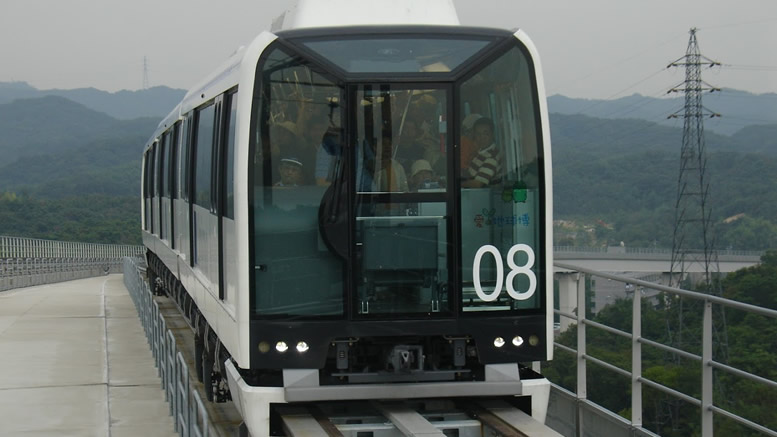 The Linimo Maglev Train is The world’s first commercial automated “Urban Maglev” system.
The Linimo Maglev Train is The world’s first commercial automated “Urban Maglev” system.
Built for the 2005 World Expo in Nagoya Japan the 8.9klm line connects Bampaku-yakusa station to Fujigaoka station. Japan has several private railway companies that can operate independent lines to each other. Transferring from one companies station to another companies station to complete your journey is a common occurrence in Japan, so the fact that the unique Maglev system is used terminating at one end of the Aichi Loop Railway and the other end of the Nagoya Subway Higashiyama Line is not a problem.
There are 9 stops on the line that goes from a highly elevated track around the hills near the Expo site to a underground track where it terminates next to the Subway line. The Linimo has a minimum operating radius of 75 m and a maximum gradient of 6%. The linear-motor magnetic-levitated train has a top speed of 100 km/h. The line serves the local community as well as the Expo 2005 fair site. The trains were designed by the Chubu HSST Development Corporation, which also operates a test track in Nagoya.
The Linimo is not the only Maglev Project in Japan, there are plans to develop a Maglev Bullet Train (Shinkasen) From Tokyo to Osaka. Bullet Trains have been used all across Japan since 1964 but these trains are a fairly standard arrangement in the fact they use the familiar steel track system. With the ability to tilt into corners these fast trains can reach speeds of up to 300Klm/h.
The New Maglev Shinkasen is being tested on a test track in Yamanashi prefecture where test trains have reached 581 km/h (363 mph), These trains use superconducting magnets which allow for a larger gap, and repulsive-type “Electro-Dynamic Suspension” (EDS). In comparison the 100khr Linimo train uses conventional electromagnets and attractive-type “Electro-Magnetic Suspension” (EMS). These “Superconducting Maglev Shinkansen”, developed by the Central Japan Railway Co. (“JR Central”) and Kawasaki Heavy Industries, are currently the fastest trains in the world, achieving a record speed of 581 km/h on December 2, 2003. If a proposed Chuo Shinkansen is built, connecting Tokyo to Osaka by maglev, this test track would be part of the line.
The long term benefits of a maglev system not only begin with a safe smooth and quiet ride. It is suggested that because there is no friction between the train and the track operating costs are much lower along with less ware and tear costs associated with the moving parts of a traditional train. perhaps as the initial outlay costs of these 21st century trains reduce more and more may be seen all across the world.
